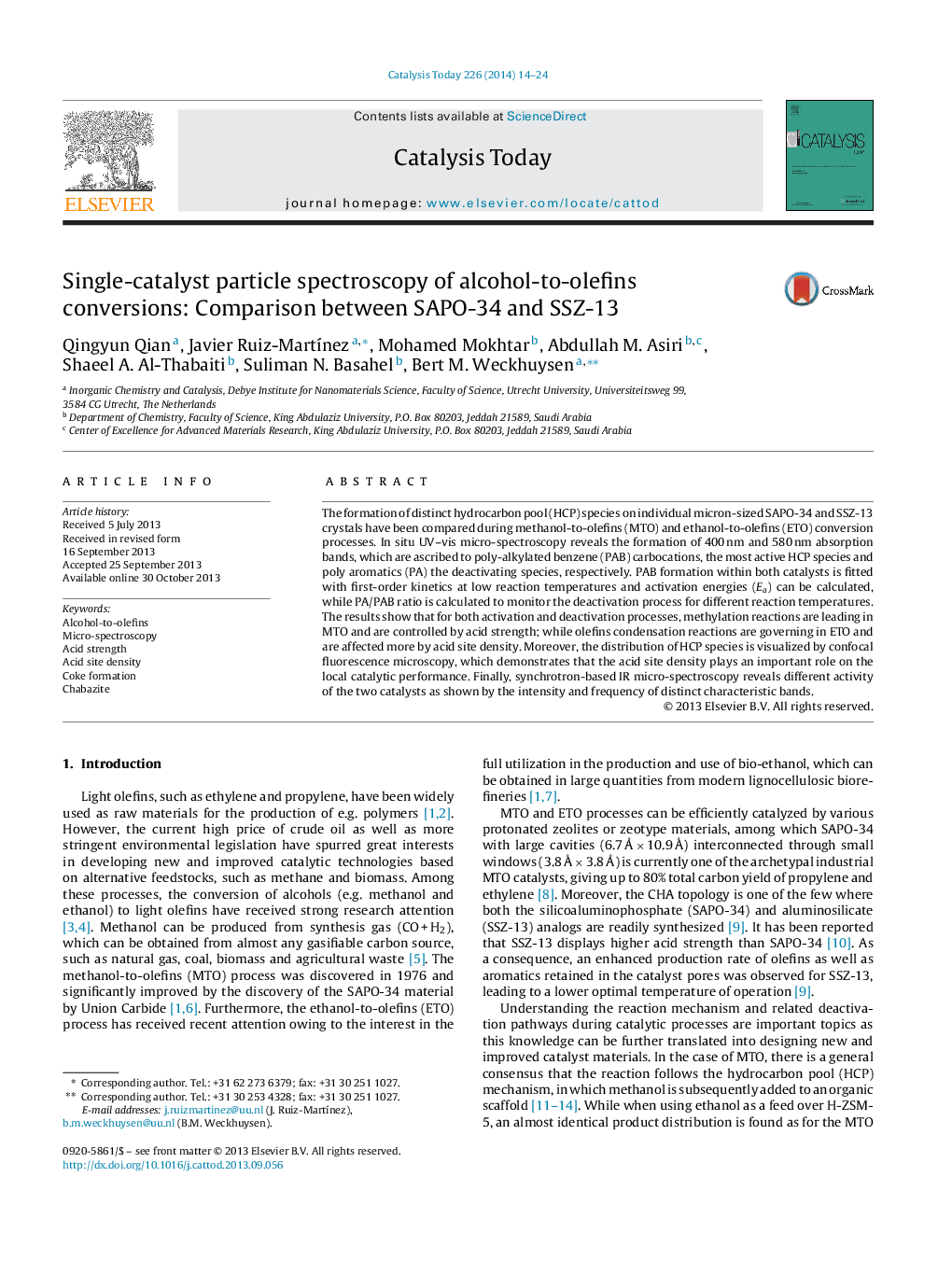| Article ID | Journal | Published Year | Pages | File Type |
|---|---|---|---|---|
| 54504 | Catalysis Today | 2014 | 11 Pages |
•Alcohol-to-olefins reactions over single SAPO-34 and SSZ-13 crystals have been compared.•Acid strength plays an important role in methylation reactions.•Olefins condensation is affected by the acid site density.•Acid site density influences the distribution and amount of species in single crystals.
The formation of distinct hydrocarbon pool (HCP) species on individual micron-sized SAPO-34 and SSZ-13 crystals have been compared during methanol-to-olefins (MTO) and ethanol-to-olefins (ETO) conversion processes. In situ UV–vis micro-spectroscopy reveals the formation of 400 nm and 580 nm absorption bands, which are ascribed to poly-alkylated benzene (PAB) carbocations, the most active HCP species and poly aromatics (PA) the deactivating species, respectively. PAB formation within both catalysts is fitted with first-order kinetics at low reaction temperatures and activation energies (Ea) can be calculated, while PA/PAB ratio is calculated to monitor the deactivation process for different reaction temperatures. The results show that for both activation and deactivation processes, methylation reactions are leading in MTO and are controlled by acid strength; while olefins condensation reactions are governing in ETO and are affected more by acid site density. Moreover, the distribution of HCP species is visualized by confocal fluorescence microscopy, which demonstrates that the acid site density plays an important role on the local catalytic performance. Finally, synchrotron-based IR micro-spectroscopy reveals different activity of the two catalysts as shown by the intensity and frequency of distinct characteristic bands.
Graphical abstractFigure optionsDownload full-size imageDownload high-quality image (207 K)Download as PowerPoint slide
